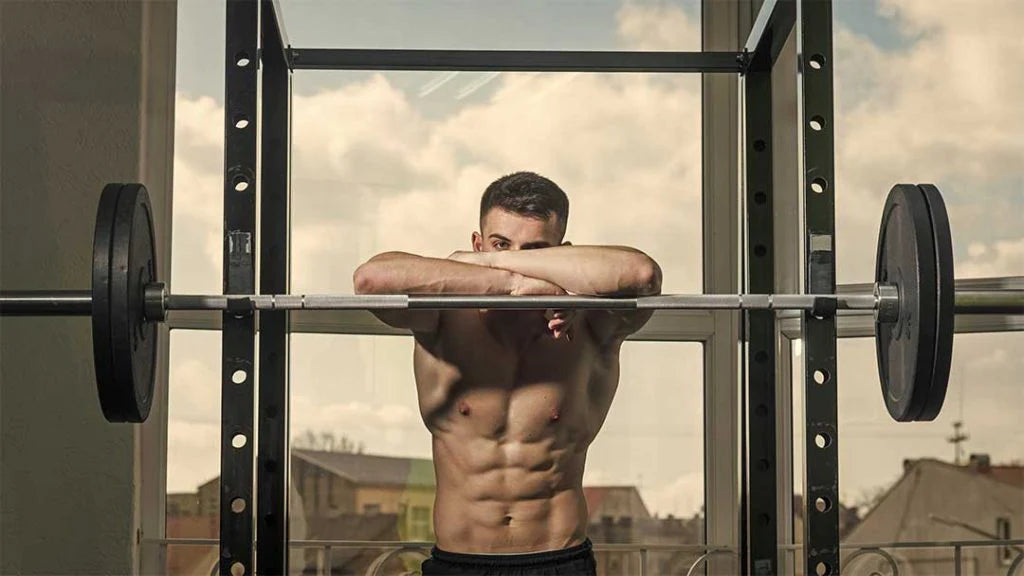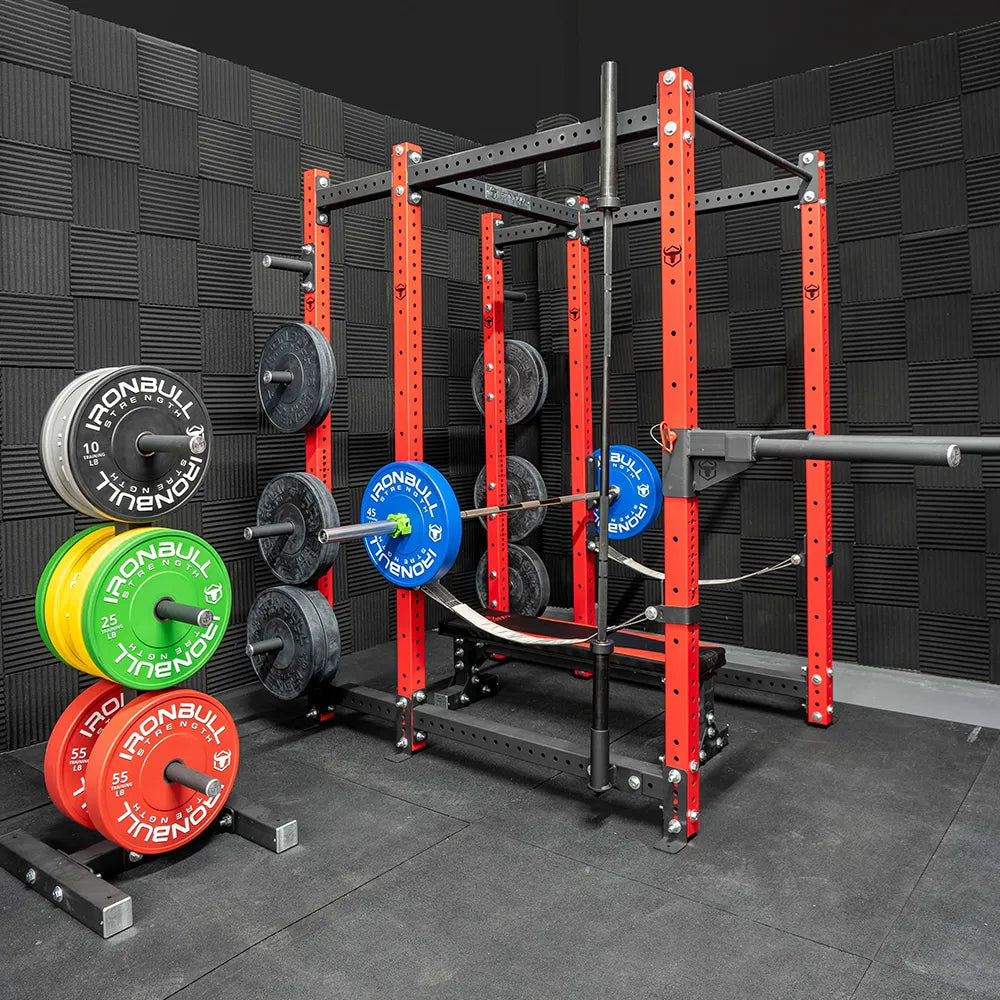Est-il sécuritaire de s'accroupir sans support à squat ?

Préoccupations en matière de sécurité liées à la pratique du squat sans support
Faire des squats sans rack peut donner l'impression de marcher sur une corde raide sans filet de sécurité. L'un des principaux problèmes est l'absence de barres de sécurité. Ces barres servent à retenir la barre si vous ne parvenez pas à terminer un mouvement. Sans elles, vous vous exposez à un risque accru de blessure. C'est comme conduire sans ceinture de sécurité : certes, vous pouvez vous en sortir, mais voulez-vous vraiment prendre ce risque ?
Un autre problème est le risque de faire tomber la barre. Si un squat ne se déroule pas comme prévu, il devient difficile de s'en relever en toute sécurité, surtout avec des poids plus lourds.
Cela peut conduire à des situations délicates, voire dangereuses. Imaginez essayer d'équilibrer une lourde charge tout en essayant de la dégager. Ce n'est pas drôle.
Dans l'ensemble, soulever des poids sans support rend le contrôle de la barre plus difficile en cas d'échec, ce qui peut exercer une pression inutile sur le corps. Le risque de blessure augmente, et ce qui semblait être une bonne idée se transforme soudainement en cauchemar. Pour soulever des poids plus en sécurité, notamment avec des charges lourdes, investir dans un support à squat pour votre salle de sport à domicile est une solution judicieuse.
Limitations de poids sans support
Si vous envisagez de faire des squats sans support, gardez à l'esprit que cette pratique n'est vraiment sûre que pour des poids légers. Plus le poids augmente, plus le risque augmente. Squatter sans support peut rapidement devenir dangereux à mesure que vous prenez du poids.
Cette limitation peut être frustrante, surtout si vous cherchez à progresser. Sans le soutien d'un rack, tenter des exercices plus lourds est risqué, ce qui peut freiner votre progression en force. Les haltérophiles intermédiaires et avancés risquent de se retrouver bloqués, incapables de repousser leurs limites en toute sécurité.
Tester ses records personnels sans rack est également risqué. Vous pourriez être tenté de voir ce que vous pouvez faire, mais sans la sécurité d'un rack, c'est un pari risqué.
Pour manipuler les poids en toute sécurité, pensez à utiliser des plaques de protection olympiques . Elles peuvent réduire l'impact en cas de chute de la barre lors d'un exercice raté.
Défis d'installation sans rack
S'installer pour un squat sans rack peut s'avérer très compliqué. L'un des principaux défis est le mauvais positionnement de la barre.
Sans support, il peut être difficile de placer la barre à la bonne hauteur, ce qui peut entraîner des positions de départ inconfortables et dangereuses. C'est comme essayer d'insérer une cheville carrée dans un trou rond : frustrant et potentiellement dangereux.
Il existe également un risque de blessure lié à la mise en place elle-même. Soulever la barre du sol pour la mettre en position peut provoquer des tensions musculaires, surtout si vous ne le faites pas correctement.
Il ne s’agit pas seulement du squat ; il s’agit de tout le processus, et sans rack, ce processus devient compliqué.
Sans point de départ stable, contrôler la barre devient plus difficile. Cela augmente le risque de mauvaise posture, source de blessures.
Pour une installation plus sûre, pensez à intégrer un banc de musculation réglable à votre routine. Il vous offrira un soutien pendant vos autres exercices et diversifiera vos séances.
Qui peut s'accroupir en toute sécurité sans support ?
Si vous débutez avec des poids légers, les squats sans support sont faciles à réaliser. Les squats au poids du corps ou avec des poids très légers ne nécessitent pas de support et peuvent constituer un bon point de départ. C'est comme tremper ses orteils dans l'eau avant de plonger.
Les squats au poids du corps sont une option sûre sans support et peuvent néanmoins vous aider à développer la force du bas du corps. C'est un excellent moyen de se familiariser avec le mouvement sans la pression supplémentaire des poids lourds.
Cependant, une fois que le poids augmente au-delà d’un certain point, un support devient nécessaire pour une progression continue et une sécurité accrue.
Si vous pratiquez le squat sans rack, commencer avec des haltères à résistance légère peut être une bonne option. Ils sont faciles à manipuler et offrent un peu de défi sans risque.
Alternatives plus sûres au squat sans support
Si vous craignez de faire des squats sans rack, il existe des alternatives plus sûres. Utiliser un power rack est une option. Il offre des dispositifs de sécurité intégrés, comme des barres de sécurité pour retenir la barre en cas de raté. C'est comme avoir un filet de sécurité, au cas où.
Si vous faites des squats sans rack, il est important de pratiquer des techniques de saut sûres. Commencez avec des poids légers pour développer des techniques de saut sûres. Il ne s'agit pas seulement de soulever le poids, mais de savoir gérer un saut manqué en toute sécurité.
Essayez des variantes de squats qui ne nécessitent ni barre ni rack. Les squats avec haltères, les goblet squats ou les squats au poids du corps constituent un bon entraînement sans installation complexe. Les kettlebells peuvent être un excellent outil pour les goblet squats et autres variantes.
Quand utiliser un support à squat pour des raisons de sécurité
Pour les exercices de musculation modérés à lourds, un rack à squat est essentiel pour une levée en toute sécurité. Dès que vous soulevez une charge importante, le support d'un rack est crucial. C'est comme avoir un plan de secours, au cas où les choses ne se passeraient pas comme prévu.
Pour battre de nouveaux records personnels ou prendre du poids, un rack est indispensable. Pour tenter de battre des records personnels ou de prendre du poids, il est essentiel de bénéficier du soutien et de la sécurité qu'offre un rack. Il s'agit de repousser ses limites en toute sécurité, sans risques inutiles.
Si vous ne savez pas comment sortir en toute sécurité d'un ascenseur défectueux, un rack est une option plus sûre. Mieux vaut avoir ce filet de sécurité en place que de risquer une blessure. Lorsque vous soulevez des charges lourdes avec un rack, pensez à ajouter des ceintures de levage pour un meilleur soutien du tronc.


